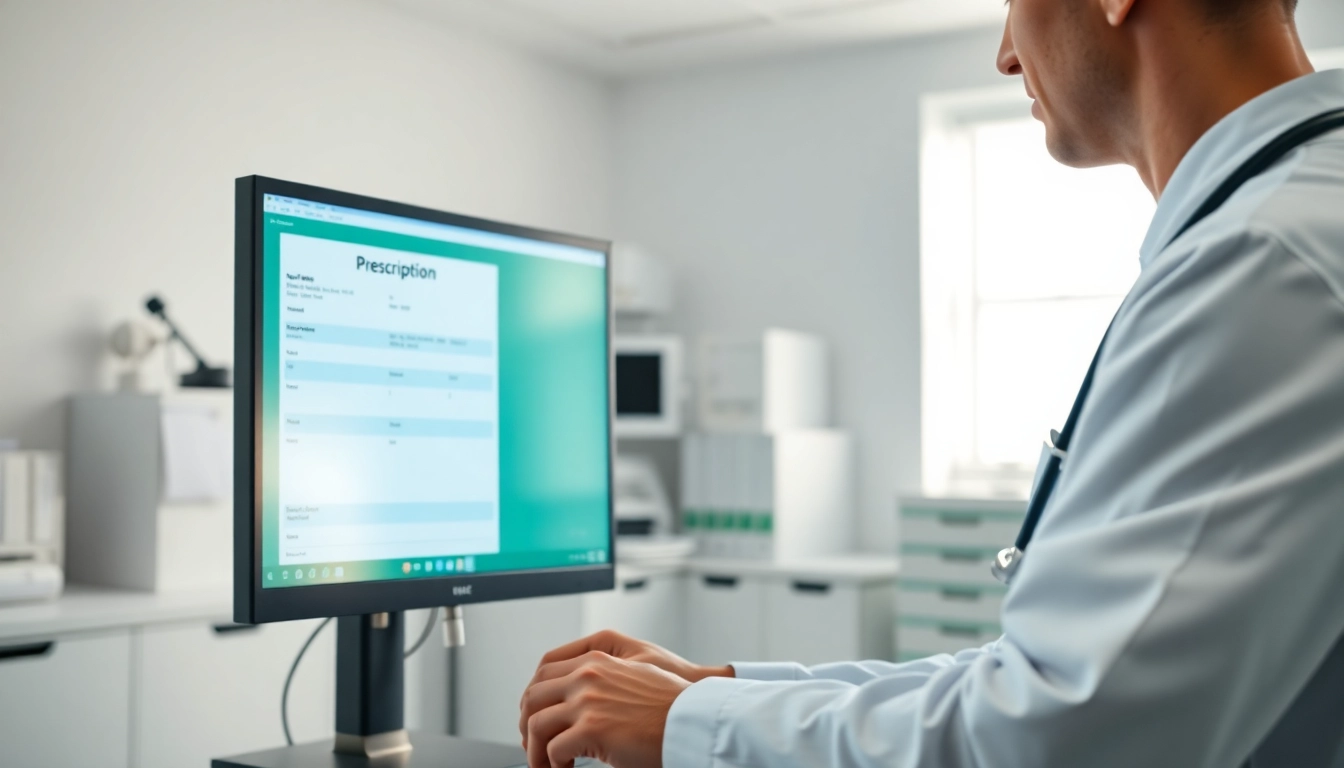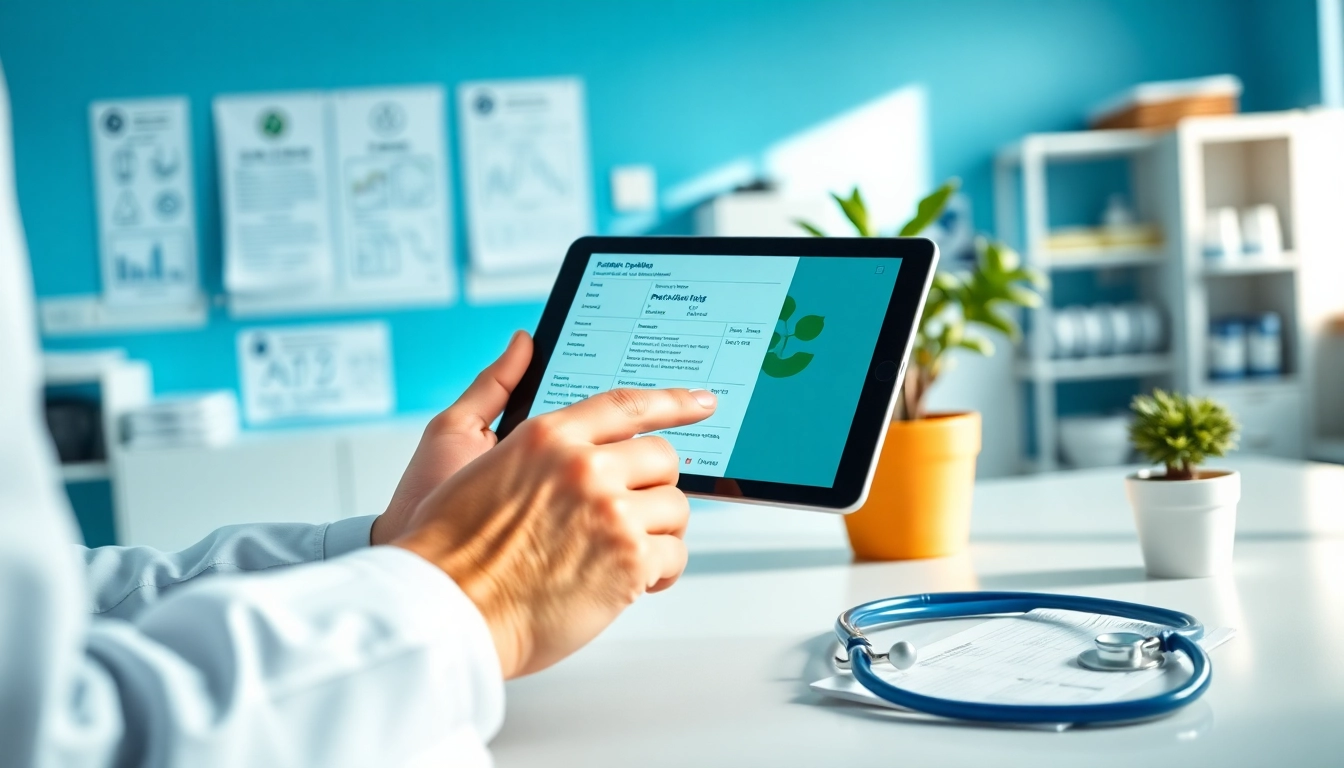Understanding E-Prescribing: What You Need to Know
Definition and Importance of Free Eprescription Apps
E-prescribing, or electronic prescribing, is the digital process of creating, transmitting, and filling prescriptions for medications, powered by technology. As healthcare continues to evolve with advancements in technology, the importance of free eprescription apps has become increasingly apparent. These applications enable healthcare providers to write, send, and manage prescriptions from a mobile device or computer, streamlining the medication process for both doctors and patients.
The rise of e-prescribing responds to several challenges in traditional prescription methods, such as prescription errors, time delays, and patient safety concerns. By using free eprescription apps, healthcare facilities can enhance the efficiency and security of prescribing medications, contributing to improved patient outcomes and satisfaction.
Benefits of Using E-Prescribing in Healthcare
The transition from paper prescriptions to e-prescribing offers multiple benefits for healthcare professionals and their patients:
- Enhanced Accuracy: E-prescribing reduces the risk of miscommunications due to illegible handwriting or verbal errors. It allows for clear, legible prescriptions that are transmitted electronically to pharmacies.
- Improved Efficiency: Healthcare providers can quickly create and send prescriptions, minimizing wait times for patients. This efficiency leads to better allocation of resources within medical practices.
- Better Patient Safety: E-prescribing systems often include features that check for drug interactions, allergies, and contraindications, helping to prevent adverse drug events.
- Cost Savings: By reducing clerical errors and prescription-related complications, e-prescribing can lower healthcare costs associated with medication management.
- Streamlined Communication: These apps facilitate better communication between healthcare providers, pharmacies, and patients, creating a more cohesive healthcare experience.
Key Features to Look For in Free Eprescription Apps
When evaluating free eprescription apps, it’s essential to look for features that will enhance usability and functionality:
- User-Friendly Interface: A simple and intuitive interface allows healthcare providers to quickly find and use the app, minimizing the learning curve.
- Drug Database Integration: The app should have access to a comprehensive drug database to assist providers in making informed prescribing decisions and checking for interactions.
- Patient Record Access: Integration with electronic health record (EHR) systems allows providers to review patient histories prior to prescribing.
- Prescription Tracking: The ability to monitor the status of prescriptions from issuance to fulfillment is vital for ensuring patient adherence.
- Security Measures: Compliance with HIPAA regulations and secure data transmission processes are crucial for maintaining patient confidentiality and security.
Comparative Analysis of Popular Free Eprescription Apps
Overview of Leading Free Eprescription Apps
Several free eprescription apps are gaining popularity in the healthcare industry. Each app offers unique functionalities tailored to different healthcare needs:
- iPrescribe: Known for its user-friendly interface and robust features, iPrescribe allows providers to write and renew prescriptions easily, improving workflow efficiency.
- CharmHealth: This app caters to smaller practices by offering free digital prescriptions for providers with limited patient encounters. It’s a streamline solution for managing prescriptions in under-resourced environments.
- MDToolbox: MDToolbox provides e-prescribing capabilities alongside additional tools for electronic prior authorizations and medication history access, making it a versatile choice for healthcare providers.
- DocUpdate: Focusing on a mobile-first approach, DocUpdate aims to support clinicians on the go with quick and effective prescribing options.
Strengths and Weaknesses of Each App
While each free eprescription app has its strengths, they also come with certain weaknesses that may influence a provider’s choice:
iPrescribe
Strengths: High user ratings, ease of prescription renewal, and reliable pharmacy network integration. Weaknesses: Limited features for advanced integrations with EHR systems.
CharmHealth
Strengths: Cost-effective for low-volume prescribers, good patient management tools. Weaknesses: May lack robust features needed for larger practices.
MDToolbox
Strengths: Comprehensive medication management features. Weaknesses: User interface may be less intuitive than simpler apps.
DocUpdate
Strengths: Designed for busy healthcare professionals, mobile-friendly. Weaknesses: Limited desktop functionality, which might hinder some users.
User Feedback and Ratings on Free Eprescription Apps
User experiences are critical indicators of the effectiveness of free eprescription apps. Various platforms report on user ratings and reviews:
According to feedback on app stores, many users appreciate the simplicity and speed of apps like iPrescribe, while others have expressed the need for more comprehensive integration capabilities, particularly for EHR systems.
Online forums and review sites often reveal discussions about functionality, user support, and updates, showcasing real-life usages of these applications and areas for improvement from providers that rely on these tools.
Implementation: How to Start Using Free Eprescription Apps
Setting Up Your Free Eprescription App
The starter process for using free eprescription apps involves a few essential steps:
- Download and Install: Begin by downloading the desired app and following the installation instructions.
- Create an Account: Set up a user account, entering necessary professional information, and verifying credentials where required.
- Configure Settings: Adjust app settings to suit your practice, including notifications, preferred pharmacy selections, and privacy settings.
- Import Patient Information: If the app supports EHR integration, import existing patient records to streamline the prescribing process.
Integrating E-Prescribing with Existing Systems
Integrating e-prescribing applications with current practice management and EHR systems can enhance workflow efficiency:
- Identify Compatibility: Before selecting an app, ensure it is compatible with your existing systems to prevent integration issues.
- Utilize APIs: Many free eprescription apps provide APIs that allow for seamless data transfer between software, ensuring easy access to patient data.
- Test Integrations: Conduct rigorous testing to confirm that data flows correctly between systems without loss or error.
Training Staff on E-Prescription Usage
Training staff thoroughly on the use of e-prescribing apps is essential for successful implementation:
- Conduct Workshops: Host hands-on training sessions that allow staff members to familiarize themselves with the app functionalities.
- Provide Resources: Share manuals, quick-start guides, and video tutorials that staff can refer to when needed.
- Encourage Feedback: Create an open forum for user feedback to identify pain points, ensuring all team members feel supported throughout the process.
Best Practices for Effective E-Prescribing
Ensuring Compliance and Security in E-Prescribing
Maintaining compliance with regulatory standards is crucial when adopting e-prescribing practices:
- Understand HIPAA Regulations: Familiarize yourself with the privacy and security measures mandated by HIPAA to protect patient information.
- Implement Strong Authentication: Use two-factor authentication for accessing the e-prescribing app, ensuring that only authorized personnel can use it.
- Regularly Update Software: Keep the e-prescribing software updated to patch any security vulnerabilities and stay compliant with changing regulations.
Reducing Errors with Free Eprescription Apps
Error reduction is one of the primary goals of e-prescribing. To achieve this, practices should consider:
- Utilize Error-Check Features: Make full use of the app’s built-in checks for drug interactions, allergies, and dosage recommendations.
- Standardize Processes: Create a consistent process for prescribing and filling medications, reducing room for mistakes.
- Encourage Verification: Instruct staff to always verify prescription details before sending them to the pharmacy.
Enhancing Patient Communication Through E-Prescriptions
Effective communication between healthcare providers and patients is fundamental in e-prescribing:
- Inform Patients: Notify patients of their prescriptions via secure messaging or notifications within the app, making them aware of what to expect.
- Facilitate Questions: Encourage patients to ask questions about their prescriptions, promoting transparency and trust.
- Follow Up: Use features in the app to remind patients about medication refills, encouraging adherence to their therapeutic plans.
Future Trends in E-Prescribing and App Development
Technological Advances Impacting E-Prescribing
The future of e-prescribing is bright, with technological advancements shaping how prescriptions are created and managed:
- Mobile Health (mHealth) Integration: As mobile health technology becomes more prevalent, leveraging apps that integrate health monitoring with prescriptions will enhance care delivery.
- Blockchain Technology: Leveraging blockchain for secure data transmissions could vastly improve the privacy and integrity of prescription records.
- Better Data Analytics: Integrating advanced analytics will enable providers to assess prescription patterns and outcomes, leading to better healthcare decisions.
The Role of Artificial Intelligence in Free Eprescription Apps
Artificial intelligence is set to revolutionize e-prescribing through:
- Predictive Analytics: AI can analyze patient data and predict the best treatment options based on historical outcomes.
- Automated Patient Reminders: AI can send targeted reminders to patients regarding medication adherence, enhancing treatment compliance.
- Real-Time Decision Support: AI algorithms can provide prescribers with real-time decision support based on comprehensive drug databases and patient history.
Predictions for E-Prescribing in the Next 5 Years
As the healthcare landscape continues to shift, predictions for e-prescribing include:
- Increased Adoption: More providers, especially in rural areas, will adopt e-prescribing as broadband access improves.
- Standardization of Practices: Greater movement towards standardized e-prescribing formats to ensure interoperability between different systems.
- Focus on Patient Engagement: E-prescribing will evolve to enhance patient engagement, ensuring patients remain active participants in their healthcare journeys.












Leave a Reply